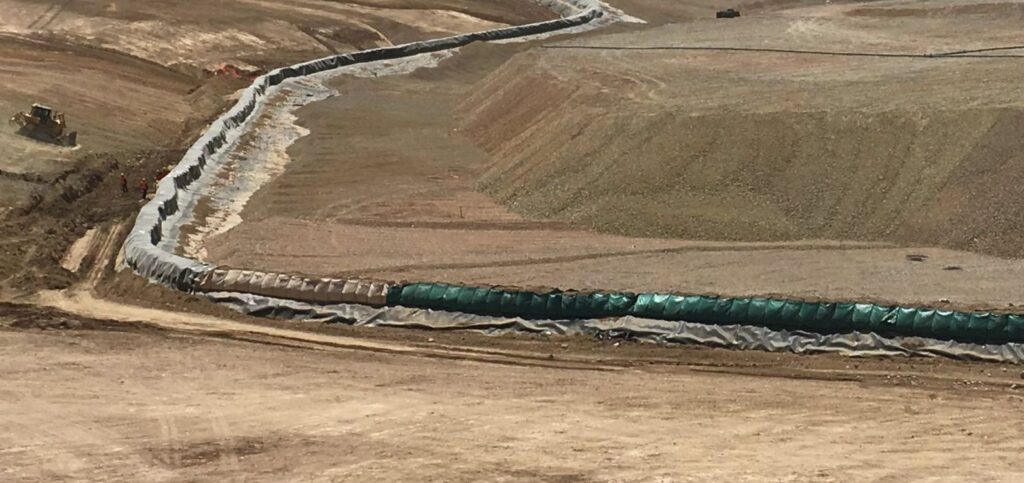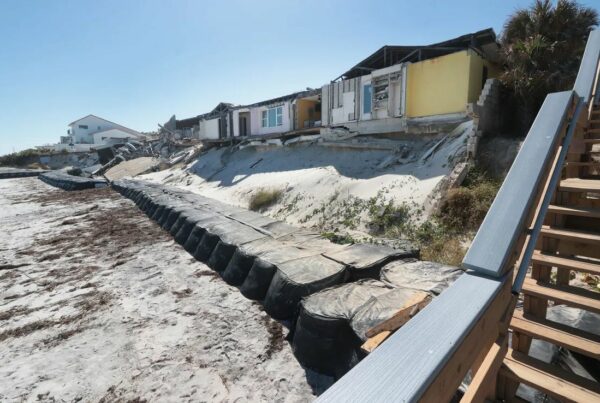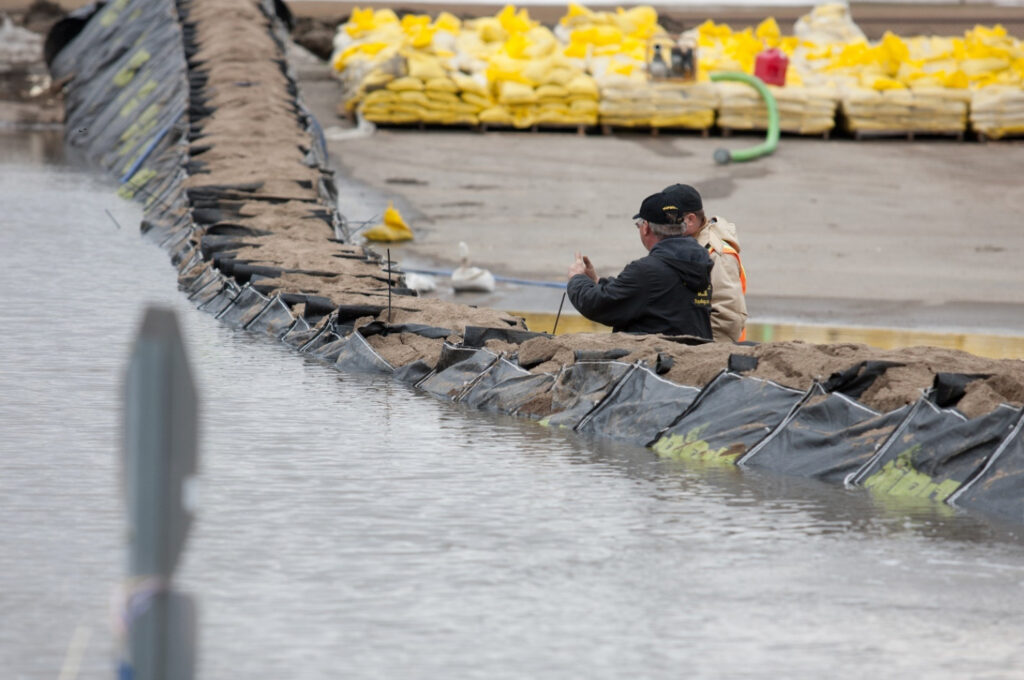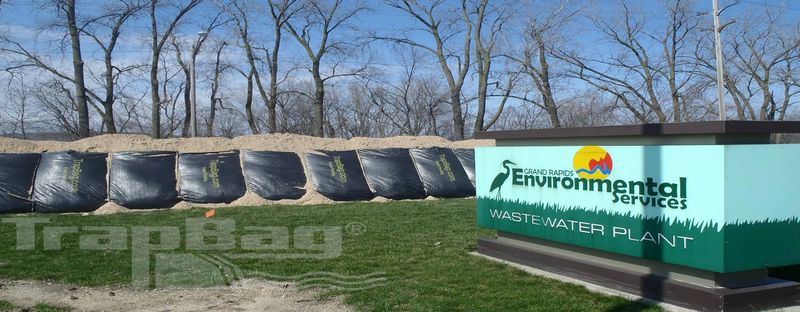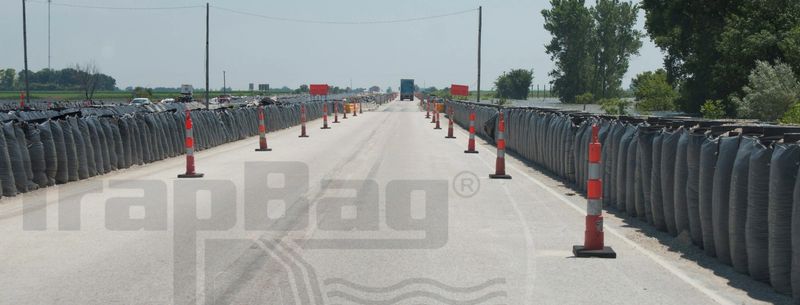How TrapBag Is Used as Barriers to Prevent Floods & Erosion in Mining
Because they’re an improvement on the design of traditional flood control systems like jersey barriers or sandbag walls, TrapBags are ideal for engineering flood control measures on any type of job site. Here’s how TrapBag can provide peace of mind for you and your mining technicians by preventing flood damage, erosion, mudslides, chemical spills, and other disasters.
Flood Control
Flood control is a critical part of mining water management best practices that keeps miners, civilians, and the water supply safe. TrapBag was designed first and foremost as a flood barrier that could keep out hurricane-force storm surges, and it continues to be a reliable flood control solution across all industries.
Mining crews can use TrapBag as standalone levees, dams, or water diversion systems for flood protection for their underground or open-pit mines. This keeps workers and equipment safe in all types of weather conditions.
Learn More »Stormwater Containment
Stormwater runoff and drainage containment is a required environmental protection measure for mining operations. Without proper containment measures, water that has been contaminated with chemicals and other harmful runoff from the mining process can enter rivers and the water supply, harming fish, other aquatic wildlife, and humans.
Fortunately, TrapBag is just as good at keeping water inside a confined space as it is at keeping it out of where you don’t want it. Many mining operations managers have chosen TrapBag as their method of choice for creating stormwater detention ponds that keep this contaminated water from leaving the construction site until it can be properly treated.
Learn More »Retaining Walls
TrapBag is used across multiple industries as an easy, cost-effective retaining wall—including in mining operations to keep excess soil and mud from getting into the mining site. TrapBag barriers They can be used to construct gravity retaining walls by stacking the barriers to create a strong and stable structure. Additionally, TrapBags are ideal for building mechanically stabilized earth (MSE) retaining walls, providing stability and support for the reinforced soil and backfill.
Learn More »Erosion Control
Erosion can cause serious problems for both small and large-scale mining operations, including dangerous and expensive repercussions. Therefore, erosion control measures are essential for mining companies to take early and often.
Because a single 100-foot section of TrapBag can replace roughly 8,000 sandbags, it allows you to save time and labor with the same results that prevent soil loss or displacement. This in turn helps your crews stay safe and protects the local natural resources.
Learn More »Dams, Dikes, Levees & Water Barriers
TrapBags are made from an extremely strong geotextile material, making them a dependable barrier when filled with sand or washed gravel. Miners can set up TrapBag barriers as dams, berms, or levees that divert mining-influenced water toward detention basins or treatment systems.
Learn More »TrapBag Solutions to Mining Flood & Erosion Problems
TrapBag is a fast, efficient, easy-to-install flood and water detention solution for mining projects. These flood barriers are the go-to water barrier system for multiple industries, and they have been for years. A few of the reasons mining companies rely on TrapBag barriers include:
-
Easier to assemble: It takes dozens of people hours or even days to build a traditional sandbag barrier or properly lay erosion control blankets near your site. However, a team of two people and a third person operating an excavator or skid steer can assemble a TrapBag barrier within a few hours.
-
Uses less material: Compared to a similarly sized wall of stacked sandbags, a TrapBag barrier uses 40% less fill material with more durable results. For example, a single 100-foot section of 4-foot tall TrapBags replaces about 8,000 sandbags to create a barrier of the same size.
-
More durable: Traditional water barriers or retaining walls have a higher margin of error during the building process, making them more prone to collapse. However, TrapBag barriers can hold back thousands of gallons of water or mud and stay standing strong through any project, including chemical spills. They can also last much longer in the sun (UV) compared to other barriers.
Why Choose TrapBags for Water Management & Erosion in Mining?
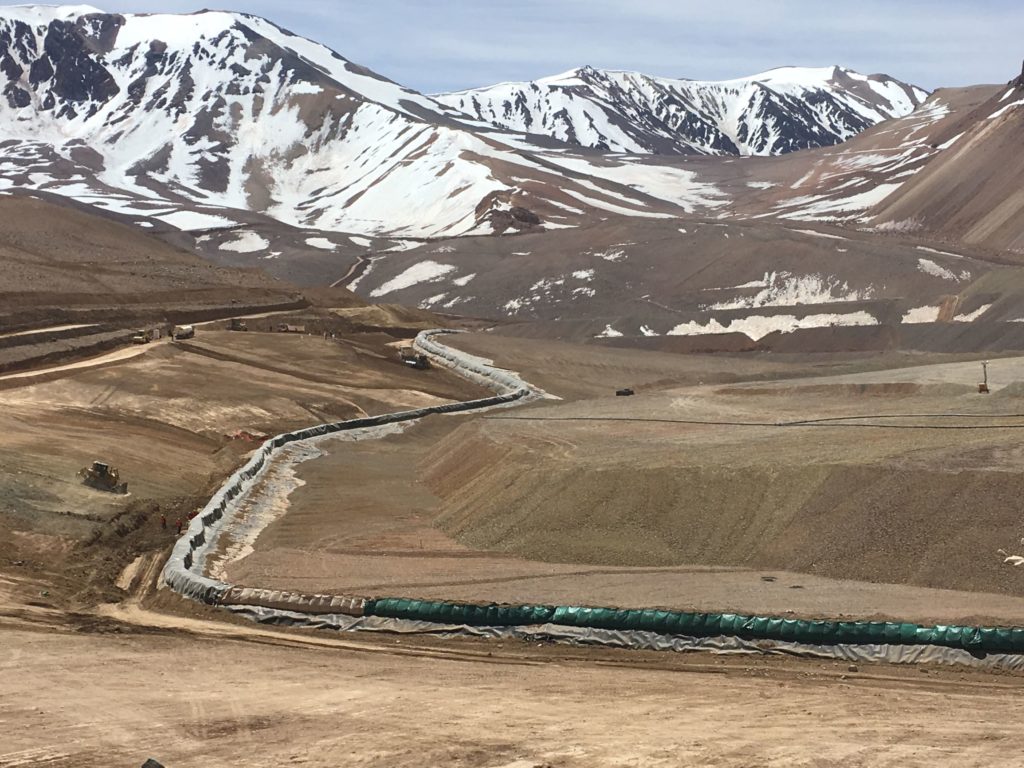
-

Versatility
TrapBag barriers are an ideal solution to mining problems involving water, mud, or shifting soil. Some of the ways mining companies use TrapBag in their operations include:
- Retaining walls
- Stormwater detainment ponds
- Diversion barriers such as dams and berms
- Leachate detention basins
- Tailing impoundment ponds
For virtually any solution you need for water management in mining, TrapBag can make it happen.
-

Speed
Mining erosion can happen quickly, so your erosion control solution needs to be even faster in return. Compared to traditional sandbag barriers and erosion control blankets, TrapBag barriers can be set up in a matter of hours. By contrast, more traditional methods can take an entire crew of people multiple days of back-breaking labor to complete properly.
-

Reliability
Because it doesn’t give way as easily as other types of barriers during challenging situations, TrapBag is a solution you can count on through any issue. It provides a 3:1 (mass to hydraulic load) safety factor that makes it a trustworthy solution for flood emergencies, chemical spills, mudslides, and other mining disasters.
To demonstrate its ability to hold back hundreds of thousands of gallons of water, the U.S. Army Corps of Engineers has successfully tested it as a catastrophic flood protection system. It’s proven to uphold requirements for practically any mining project.

